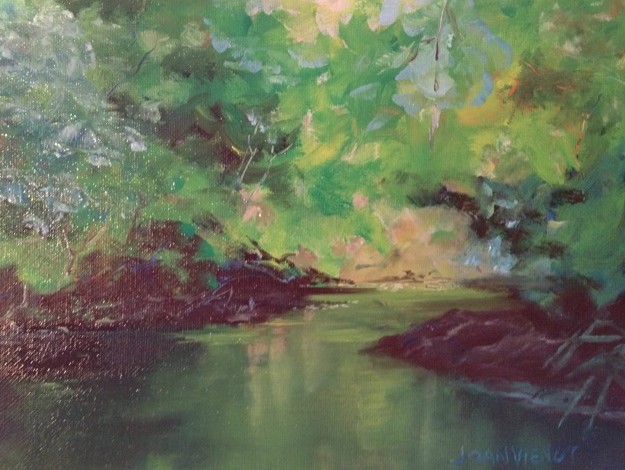
Uncertain whether it would rain or not, I deployed my sun umbrella when I set up to paint with the Emerald Coast Plein Air Painters at our weekly outing, this week at Deer Lake State Park. The beach breeze promptly blew it over and inside-out despite my wraps of rope around the stem. I was a little craftier in in how I tied it down the second time. I had to head it into the wind a little, which meant it initially was useless but 45 minutes later, it shaded my palette and canvas perfectly. And it never rained while we painted.
Deer Lake State Park contains beautiful, unspoiled, pristine sand dunes. The very long boardwalk is elevated to provide superior views in all directions, protecting the habitat below from feet beating a trail to the beach. Clouds came and went, but that didn’t matter as I blocked in the skyline of dunes and water. However, when I looked for the light and shadow the next time the sun came out, I realized I had forgotten to put my whites on my palette. I looked for them in my collection of tubed paints – nope, not there. Apparently still sitting on my table in my studio. Now what? The other painters were all a good hike away from me, so I decided to paint without borrowing white for as long as I could. I had toned the bottom half of the canvas with beige acrylic before I started, so it wasn’t stark white. The dunes were very white though, where the bare canvas showed in between the painted bushes and grass. I decided that was a good thing. I decided that I might not need white, if I could be disciplined enough to not paint where the white needed to be.
Park visitors walked past me, on their way to the beach, but some stopped to watch. They complimented my work, and some talked to me. I enjoyed that. There are times when I am seriously challenged by my painting, when I might not be in the friendliest of moods, but today’s painting was fun and interesting. Working without white made me a bit nervous, but it also provided an excuse if the painting didn’t turn out good, so I think I may actually have been fairly relaxed.
The group met in the picnic shelter back at the parking lot, for our “soft” critique, and we then packed up and met at a local restaurant for lunch.
Another beautiful painting adventure!









 Joan Vienot with Julie Gilbert Pollard
Joan Vienot with Julie Gilbert Pollard















